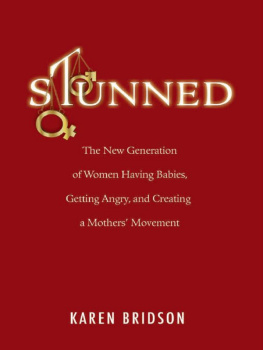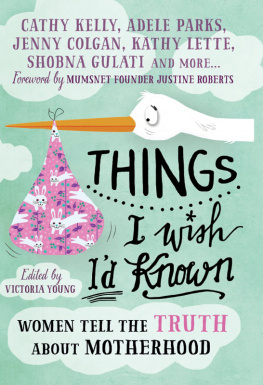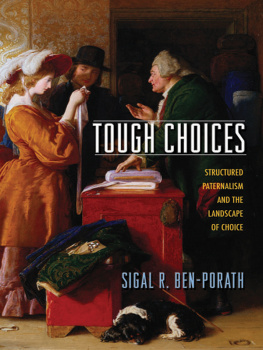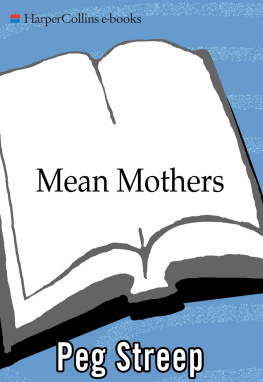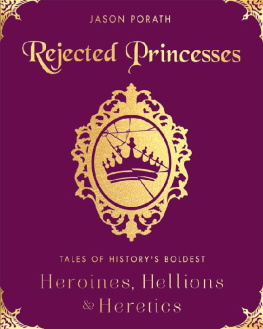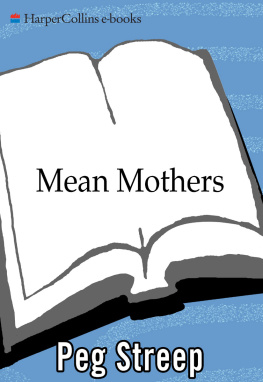Contents
Contents
Guide
To my mom, toughest of all.
May I one day be as capable as you.
And to Jeremy, who hates the spotlight.
May I one day be as generous as you.
There are two origin stories for this project. The short version is a lunchtime conversation between coworkers at DreamWorks, spitballing the worst ideas possible for an animated princess movie. One of them leaves the studio and develops the idea; it goes viral and theres a series of books. Short, simple, easy.
The longer origin story is about my mother.
Here are some things you need to know about my mom. Her anniversary presents from my stepdad early in their marriage included a flamethrower, a chainsaw, and a power scythe. help, because we wouldnt do as good a job (she was probably right). When she decided to make a website for her jewelry business (after she taught herself to make jewelry), she made it by herself, in secret, teaching herself how to code too. She did so knowing full well that half of the family are software engineers. She didnt want help. And she made a great website.
Despite all that, when she was growing up my mother was a pariah.
My mom was born in Kentucky in the 1940s. It was not a world with a place for women like her. She spent years trying to fit inshe was a cheerleader!all the while suspecting that there was something different about her, that she was some sort of aberration. It wasnt until she was in her thirties that she began to flourish. She eschewed the expectations put on her and started doing what she wanted to do. Before long, she had her own job; she was a published author; her art was gaining notice; she had become that intensely capable person Ive described to you. Faced with a world with no place for her, she carved her own place out of granite. And at that moment, as all doors opened to her, she asked herself: What do I really want out of life? Who do I choose to be?
And she chose to be my mom.
She never looked back on that choice. But I did. I remember catching glimpses of the life shed had before, of all that shed put down to raise me and my brothers. I continually meditated on the magnitude of that choice, unable to hold it in my head. Had she been only half herself all this time? Had she pushed her own personality, her likes and dislikes, dreams and goals, to the side, just to give me the best life possible? Is that the sacrifice all mothers make? Is it worth it? Was I worth it?
In part, I began Rejected Princesses to pay my mother back, to prove that her choice had been worth it. Of course, I was proving this to myself more than to hershe never questioned her choice even once. She knew that she didnt stop being herself just because she had her sons. If anything, she became more herself, because shed walked down the path she wanted, of her own volition. The trade-offs shed made, shed make again, if she could.
But another large part of this work was to reach out to every girl who has ever been in my moms situation, who felt they were someone for whom the world had no place. This is a book full of extreme personalities, of lives lived fully, brashly, boldly (if not always wisely). These are your mothers, your grandmothers, your birthright. You are not alone.
To the weirdos, pariahs, and aberrations: Glory in your edges and never let them dull. Dont file yourself down for anybody.
And to the mothersmine and all others out there, giving selflesslyno words will ever be able to fully recognize all that you put aside. Thank you is too meager, too small, too inadequate, but its all we have.
Thank you.
A Note on the Scholarship
Im not a professional historianmy background is in film criticism and animation. However, I do my damndest to make sure everything here is right (there are more than 200 citations in the back), but Im only human. This is a book meant to inspire, illustrate, and intriguenot to be the end point of your inquiry. My work sits on the shoulders of giants: historians whove worked tirelessly to bring these stories to light. If you are interested in learning more, I urge you to do so, using the bibliography as a starting point.
YOU SHOULD KNOW WHAT YOURE ABOUT TO READ
Unlike what you may be used to reading, this book doesnt pull punches. Its not censored. Sometimes theres rough content.
Not every entry is suitable for every reader (despite the cartoony demeanor). To accommodate readers of all ages, this book is arranged by maturity level, not alphabetically by name. (For an alphabetical list, check the index.)
The following guide markers can help you decide whats a good fit for you.
As the book goes on, the icons change from green to yellow to red. The way to think about these divisions is, how much evil are you comfortable with in the world?
- Green is simple. Good beats evil, the world is moral. Think PG.
- Yellow is more complex. No black and white, just shades of gray. Think PG-13.
- Red requires maturity. You must be your own moral guide. Think R.
Additionally, look out for these icons that tell you whats in an entry.
Lastly, to highlight the continuity of history, this book points out where people in this volume and those in Volume One (Rejected Princesses) interact. Names in purple indicate figures covered in Volume One, and names in blue indicate figures covered in this book. Keep an eye out for them!
On to the stories!
The Mother Who Bought Back Her Country
The Mother Who Stuffed Her House
The Mother of Jeju Island
The Mother of the Modern Mastectomy
The Mother of Nations
The Mom with a Will of Iron
The Mom Who Went to Washington
The Mother Who Invaded Rome
The Mother Who Made Her Own Fortune
The Mom Who Became Shogun
Next page

